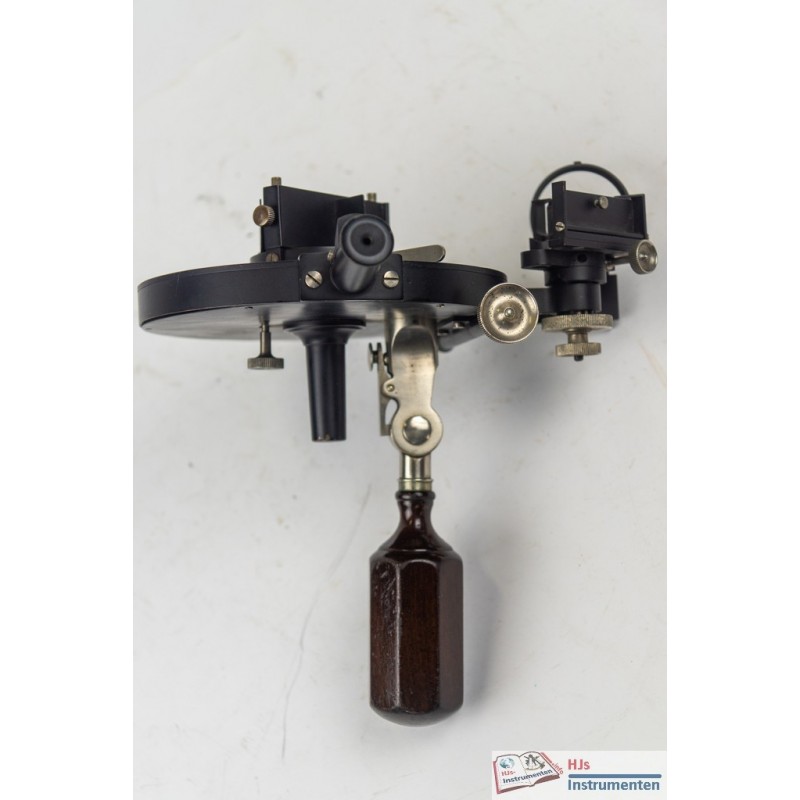














Istituto Idrográfico circular sextant
This must be the most special sextant in my collection. At least it took me the most effort to figure out how to operate it. The instrument is stamped 'Istituto Idrográfico' which is the name of the Italian Hydrographic Office / Service. The basics where soon clear (it is a reflecting sextant), however its history and operating details not only eluded me, but also other professionals. Basic operations was easy to figure out, how to actually use it wasn't. I brought it to the National Maritime Museum of the Netherlands (in Amsterdam) during a sponsor event where historical objects could be valued. The persons present new less about the instrument than I did... Inquiries to the IHS were never replied upon.
At some point I found some documentation from 1873 when the instrument was originally designed / invented by (later) admiral Managhi. However, I couldn't get the instrument to operate according to the instructions. It was also clear that my instrument differed (in details) from that described. After much more searching did I find a further article in the International Hydrographic Review of 1929 (see attached) which shows a photograph of the exact type I have in my collection. And, lo and behold, then I found out the problem. For a long time I had assumed (incorreclty) that the front of the prism was to be used. Rather unusual, but with historic instruments you never know... Also because it had a 'flap' for uncovering it. The sides of the prism were covered by a metal plate. In the original article the photograph (and description) however clearly showed that the inside of the prism was to be used ánd that the sides had to be uncovered. The flaps covering it were to block out spurious rays and had to be mounted in the opposite direction. After that the instrument immediately made sense...
The sextant is actually a reflecting circle and using both sides of the prism can measure up to (and over) 180 degrees. As stated it uses prisms rather than mirrors for reflecting the images. One prism is used to go to around 120 degrees, the other takes over by rotating the whole assemblyl through 180 degrees (pointing the prism in the other direction). The door / flap at the long side of the prism normally stays in place.
The scale can be read through two microscopes on opposite sites (to compensate for any errors). This type arrangement is not uncommon in reflecting circles in that it is read on both sides. However, reading it through a microscope is. The only other sextant in my collection doing the same is the Skalen sextant from Freiberger. Also similar to the Freiberger is the division of the scale. Rather than using a vernier, the scale has a plain, simple, reading allowing it to be read to 10 seconds directly and around 3 seconds estimated. A vernier could have made this more accurate (but even harder to read).
What puzzles me is the use of the two scales and microscope. Reading such an instrument while on a moving boat must have been relatively slow. The instrument is however beautifully made with a folding handle with an elaborate locking mechanism. Similar are the adjustment screws on the horizon prism. The only 'afterthought' seems to be the handles to make the circle rotate. Though rapid for adjustments, one gets the feeling your hands are in the way some of the time.
Data sheet
You might also like